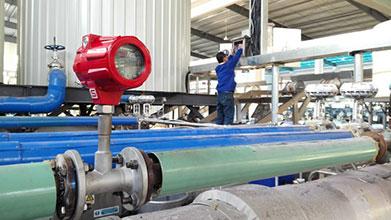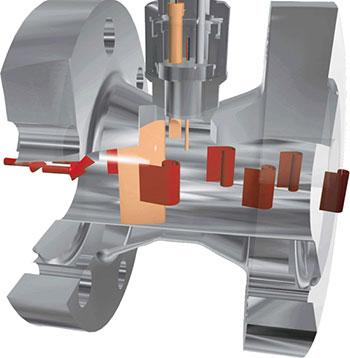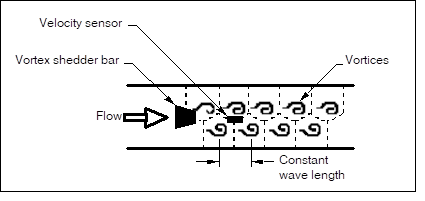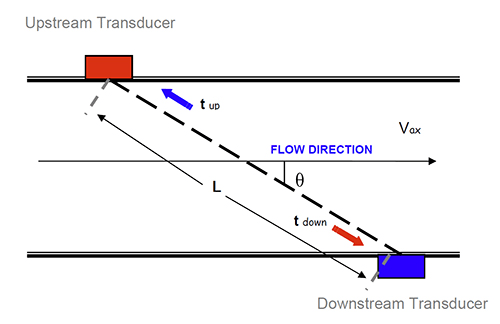A Vortex Flow Meter is a device used for measuring the flow rate of a fluid within an enclosed pipe. This type of flowmeter will normally comprise of - a flow sensor and signal processor.
Vortex flow meters are progressively becoming the chosen flow technology for gas, liquid, and steam flow measurement. A vortex flow meter is ideal for measuring saturated and supersaturated steam in large facilities to improve steam production efficiency and allocation. Volumetric water flow and high flow gas measurements are also strong applications for vortex flow meters.
Below Sierra Instruments explain how vortex flow meters work and what makes these flowmeters the ideal choice for many gas, liquid, and steam industrial flow applications.
What is a Vortex Flow Meter?
A vortex flow meter utilizes the fluid dynamics principle of vortex shedding to calculate the velocity of liquids, gases, and steam, across a wide variety of applications.

How Do Vortex Flow Meters Work?
Vortex meters use a dimensioned bluff, sometimes called a shedder bar, to generate the phenomenon known as Kármán vortex street in which vortices begin to form and oscillate. Using a variety of sensor technologies, the natural frequency of these oscillating vortices is converted into a digital signal which is then processed through the meter’s electronics to calculate flow.


Types of Vortex Sensor Technologies
Some of the sensor technologies used to measure the natural frequency produced during vortex shedding include:
- Piezoelectric crystals and ceramics – These materials produce an electrical charge in response to an applied mechanical stress. As vortices pass the sensor, they apply the stress needed for the piezoelectric material to produce a charge. Polarity may be used to distinguish the alternating current and create a digital frequency.
- Delta P sensors – The formation of vortices creates a dynamic pressure in accordance with Bernoulli’s Principle . The pressure is lowest at the point of the vortex core and increases as that point moves away from the center. By using a Delta P sensor to measure these pressure changes as the vortices pass, a digital frequency can be generated.
- Ultrasonic sensors – Ultrasonic sensors measure the time it takes a generated signal to travel from one transducer to another. Because the alternating vortices being shed from a bluff rotate in different directions, the signal being sent from an ultrasonic sensor will speed up or slow down based on the direction of rotation relative to the direction the signal is traveling. This shift in speed, when compared to a constant, can be used to create a digital frequency.

Advantages of Vortex Flow Meters
Vortex flow meter technology offers an accurate and natural occurring method for measuring flow. Due to the natural occurrence of vortex shedding when a bluff is introduced, this method of flow measurement can be used with many types of fluids, gasses, and even steam. The lack of moving mechanical components also make for a robust construction that can hold up in some of the toughest application environments.
Not sure if a vortex flow meter right for your application?
Parts of this article have been used with permission from Sierra Instruments and was originally written by Scott Rouse and published on 25th July 2017.
